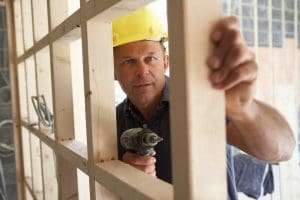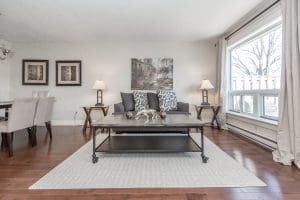Something I hear more than anything else when I’m taking out buyers or investor clients is “ Do you think we should flip a house?”. From teachers, to lawyers all the way to any general contractor in the book, flipping a house has always been seen as a lucrative way to make money in real estate. I can’t blame consumers for thinking that flipping houses is going to create a gold mine. There are probably 50 shows on HGTV with contractors walking into homes in freshly pressed suits or nice clothes showing you how easy it is to make $100,000.
While it’s great for TV, the reality is that most people that try flipping houses don’t actually make that much money. More importantly, if they’re not careful they can end up losing money. I’ve unfortunately seen many people try their hands at flipping without properly planning and the results have been devastating.
Flipping Houses is like any other business. You have to create a detailed plan and ensure that you are being completely objective. If you want to be successful at flipping houses, read the walk through list below.\
STEPS TO SUCCESSFULLY FLIPPING A HOUSE
1. Have your finances in order: Don’t entertain the thought of flipping a house when you don’t know what you
2. Don’t shoot for the stars: Don’t get it in your head that you’re going to make $100,000 by putting in some laminate flooring and an Ikea kitchen. The reality is that flipping is a bit of a science and you need to be accurate in your approach. It is very hard to make $100,000 off of flip and you will not be able to make $100,000 on a $400,000 purchase. Factor in the cost of carrying the home and the loss of potential income from having your money tied up in a home for too long. What you should aim for is a reasonable sale price that is reflective of the current market. If you want flipping to be a business try spreading your desired income over the course of the year. Instead of looking to make $100,000 on one home why don’t you try looking at making $50,000 on three homes?
3. Picking a location: Location is one of the most important factors when buying a home, so naturally it’s an important factor when flipping a home. That being said, we can’t assume that being in the best location is going to ensure you’re getting the best return. What you need to be doing is looking for locations where there are a good spread of older homes and also have homes in the community that have been renovated. Your real estate agent should be able to search a specific district or area and see what the highest price homes are selling for and compare that to what the lowest price homes are selling for. The difference in the middle is your spread. For instance, if you’re in a particular area where two-storey detached homes are selling at a high point of $1,000,000 and a low point of $780,000, that means you have a $220,000 spread to work with.
4. Study the market trends: Market trends are extremely important when flipping a house. You would be very smart to ensure that the market isn’t going through a correction, or that there isn’t any new government mortgage changes being implemented. When you’re considering purchasing a flip, another thing you want to be looking for in the market trends is seeing the sales history in an area.
5. Renovate according to the area: This is probably the number one factor that affects profits for people that are flipping houses. While there are tons of different renovation ideas and designs that look absolutely amazing, there are certain renovation aspects that do not fit a particular area. For instance, if you’re buying a 1200 square foot townhouse to flip, you wouldn’t put in a $7,000 Wolf stove. Why? Because you wouldn’t get the return on it. One of the most common things that people do which blow the renovation budget out of proportion is creating an open-concept space. While it looks great, the cost of getting an engineer in and getting the permits for taking down that wall cost a considerable amount of money that you wouldn’t necessarily get in return. You can view some of the biggest cost killers in flipping houses by clicking this link.
6. Check off the top priorities:
7. The math behind it all: I could talk all day about the math behind flipping a house, but I’ll stick to the main criteria that you need to consider.
*Know what your mortgage rate is and plan for the carrying costs. The interest rate that you are being charged as well as the potential breakage fee from your mortgage that you’re going to be charged can greatly cut into your profits. A lot of renovators who are buying houses to flip are paying exorbitant amounts of interest on the property and it cuts into their profits drastically.
*Accurately estimate the cost of materials and labor for your project. So many people just guess what a number is and say “Oh yeah, the kitchen is going to be about $8,000, the washrooms will be $4000 and the hardwood will be maybe $6,000” They don’t even take the time to write it down on a piece of paper. You need to take accurate measurements of the floor space and properly budget for each of the items you are planning on renovating in the home. Along with the cost of materials, you have to consider things like delivery fees, garbage bin for disposal, your labor cost and your overage charges.
8. Pick the right materials: You could spend anywhere from $3 on a square foot of hardwood flooring up to $20. Focus on more designer and trendy pieces. Items such as light fixtures or a unique backsplash could really lend themselves well to the overall aesthetic appeal of the home without breaking the bank.
9. Choose the right contractor: Labour is typically going to be the most expensive cost in your renovation budget and choosing the right 
I would recommend interviewing at least three general contractors for the project and get a good look at their history of work. They should have samples and books to show you of their previous projects. If you’re looking at subcontracting the whole project and hiring each trade individually, I highly recommend using only established companies that have been in the business for at least 10 or more years.
- Choose the right real estate agent: Finding the right property to flip requires a highly-skilled real estate agent. There are a lot of people that hold a real estate license but very few agents understand the math behind flipping houses. You require somebody who has a very good skill level at determining numbers from the onset, as well as what the future sale price is going to be. I would also recommend hiring a real estate agent who has either flip the house before, has been in renovations before or has a group of investors that they have worked with in the past that have flipped houses. This is extremely important because the proper real estate agent will be able to guide you through the process and pick the right house for you. They will also prevent you from investing money where you’re not going to get a return.
*Make sure that the agent is local. This is extremely important when flipping houses because local agents will know the ins and outs of a particular area. If you want to be connected with a local real estate agent, you could reach out and I will direct you to the best real estate agents in the area.
- Stage the Home: Even a nicely renovated house looks better with furniture in it. Buyers need to envision themselves living in the
home and the best way to do that is by having it furnished. You can stage a home for anywhere between $1,500 to $5,000 depending on the amount of furniture and the quality furniture that you use. Hire a stager who has a designation, such as a certified staging professional. This will be one of the best investments you can make when flipping a home.
- Be prepared to work: As much as you would like to think you could be hands off and pay for any problems that come your way ,it is likely that you are going to be putting in some sweat equity. While it’s not going to be an everyday thing, there are issues that come up and your contractor or designer will be calling you every now and again. You will also have to show up to the house to pick finishes and discuss any hidden problems that show up during a renovation, which you will have to decide on fixing. You could also use this opportunity to learn the ins and outs and be actively involved in some of the process. Not only will you become educated, but you could save some money in the process.
I hope after reading this article you will realize that flipping a house is not as easy as they make it look on TV! While you can make a lot of money flipping house, you do have to follow the guidelines that I’ve listed above to prevent any issues. If you have any questions or would like to arrange a consultation, feel free to fill out our contact form below or give us a call directly.


